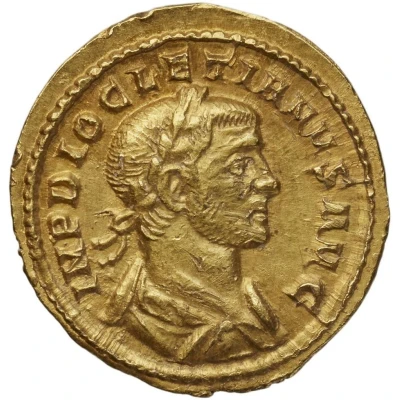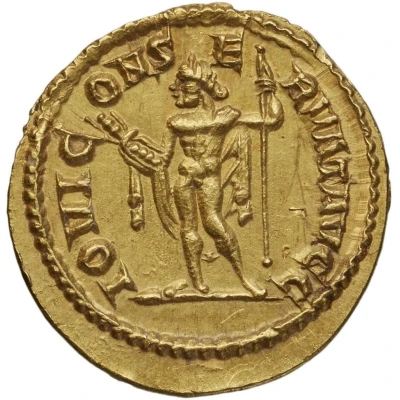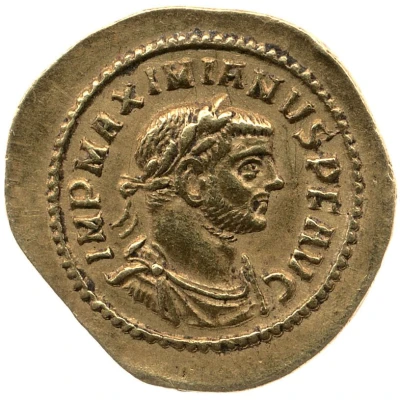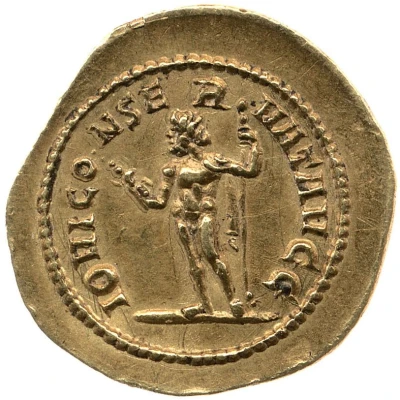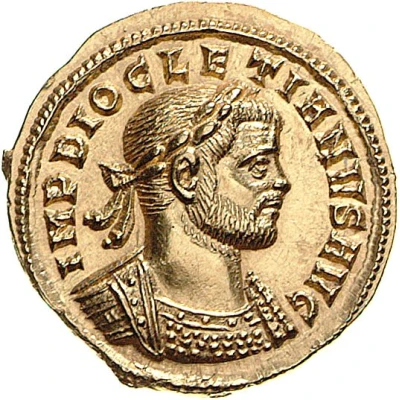
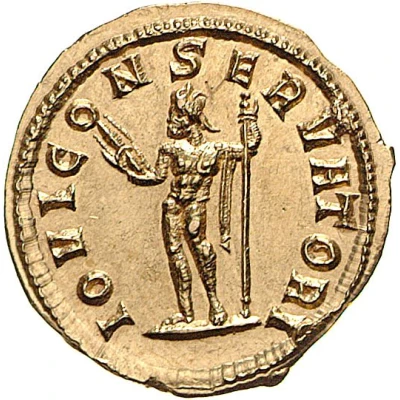

© Münzkabinett - Staatliche Museen zu Berlin (CC BY-SA 4.0)
Quinarius Aureus - Diocletian IOVI CONSERVATORI; Jupiter
| Gold | 3.1 g | 17 mm |
| Issuer | Rome › Roman Empire (27 BC - 395 AD) |
|---|---|
| Emperor | Maximian Herculius (Marcus Aurelius Valerius Maximianus) (286-305) |
| Type | Standard circulation coin |
| Years | 284-294 |
| Value | Gold Quinarius (25⁄4) |
| Currency | Antoninianus, Reform of Caracalla (AD 215 – 301) |
| Composition | Gold |
| Weight | 3.1 g |
| Diameter | 17 mm |
| Shape | Round (irregular) |
| Technique | Hammered |
| Demonetized | Yes |
| Updated | 2024-10-05 |
| Numista | N#306045 |
|---|---|
| Rarity index | 100% |
Reverse
Jupiter, standing left, holding thunderbolt in right hand and sceptre in left hand.
Script: Latin
Lettering: IOVI CONSERVATORI
Translation: To Jupiter the Protector.
Comment
Source:Online Coins of the Roman Empire (OCRE)
Interesting fact
One interesting fact about the Quinarius Aureus - Diocletian (IOVI CONSERVATORI; Jupiter) coin is that it was issued during a time of economic reform and currency standardization in the Roman Empire. The coin was introduced by Emperor Diocletian in 284 AD as part of his efforts to stabilize the empire's economy and combat inflation. The Quinarius Aureus was made of gold and had a standardized weight of 3.1 grams, which was a significant departure from the previous system of irregularly shaped and weighted coins. This coin's design and standardization marked a turning point in Roman currency and paved the way for the development of modern coinage.
